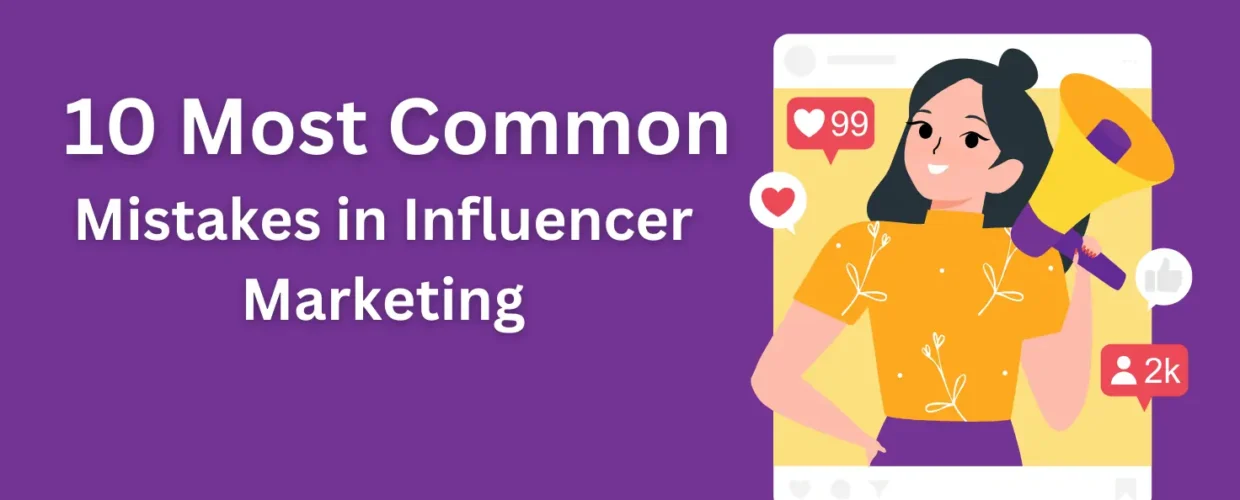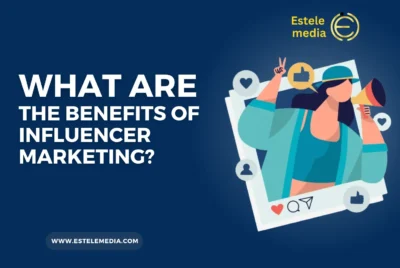Influencer marketing has taken the world by storm. With its unique ability to reach target audiences through trusted voices, it’s an essential tool in a marketer’s arsenal. However, like any strategy, it comes with its own set of pitfalls. Let’s explore some of the most common mistakes businesses make in influencer marketing and how to avoid them.
1. Choosing the Wrong Influencers
Misaligned Values
One of the biggest blunders in influencer marketing is partnering with influencers whose values don’t align with your brand. An influencer might have a large following, but if their image or content doesn’t resonate with your brand ethos, the collaboration could do more harm than good.
Solution:
Research potential influencers thoroughly. Look beyond their follower count and examine their content, audience engagement, and overall brand compatibility.
2. Lack of Clear Goals and KPIs
Undefined Objectives
Many campaigns falter because they lack clear goals. Without specific objectives, it’s challenging to measure the success of a campaign.
Solution:
Set clear, measurable goals (like increasing brand awareness, boosting sales, or growing social media engagement) and define key performance indicators (KPIs) to track these objectives.
3. Ignoring the Importance of Authenticity
Forced Content
Audiences are savvy and can easily spot when an influencer’s endorsement doesn’t seem genuine. If the content feels forced or overly promotional, it can backfire.
Solution:
Encourage influencers to create content that feels natural to them while incorporating your brand. Authenticity should always be a top priority.
4. Overlooking FTC Guidelines
Legal Non-Compliance
Failure to comply with Federal Trade Commission (FTC) guidelines for influencer marketing can lead to legal troubles and damage your brand’s reputation.
Solution:
Ensure that influencers disclose sponsored content clearly and transparently, as per FTC guidelines.
5. Not Leveraging Content Appropriately
Underutilizing Influencer Content
Often, brands don’t fully leverage the content created by influencers, missing out on potential engagement opportunities.
Solution:
Plan to repurpose influencer content across your marketing channels (with their permission). This can maximize the content’s reach and effectiveness.
6. Neglecting Long-Term Relationships
Short-Term Focus
Viewing influencer relationships as one-off transactions rather than long-term partnerships can limit the potential for deeper brand association.
Solution:
Aim to build long-term relationships with influencers. Consistent collaborations can lead to stronger brand affinity among their followers.
7. Inadequate Communication and Guidelines
Vague Briefs
Poor communication of your campaign vision and guidelines can result in content that doesn’t meet your expectations or match your brand voice.
Solution:
Provide clear, detailed briefs to influencers while leaving room for creative freedom. Effective communication is key to a successful campaign.
8. Not Adapting to Different Platforms
One-Size-Fits-All Approach
Different social media platforms have different audiences and content styles. Using the same approach across all platforms can reduce the effectiveness of your campaign.
Solution:
Customize your strategy for each platform. Understand where your target audience spends their time and tailor content to fit the platform’s unique style.
9. Ignoring Audience Feedback
Disregarding Engagement
Not paying attention to how the audience reacts to influencer content can lead to missed opportunities for improvement and engagement.
Solution:
Monitor audience reactions and feedback. Use these insights to adjust your strategy and improve future campaigns.
10. Failing to Measure and Analyze Results
Lack of Evaluation
Not measuring the results of your influencer campaigns can leave you in the dark about their effectiveness and ROI.
Solution:
Use analytics tools to track the performance of your campaigns against your KPIs. This data is crucial for understanding the impact of your influencer marketing efforts and for making informed decisions in future campaigns.
Read our latest blog on What are the Benefits of Influencer Marketing?
Conclusion
Influencer marketing is a dynamic and potent tool for brands, but it requires thoughtful execution. By avoiding these common mistakes and focusing on strategic, authentic, and compliant influencer partnerships, brands can harness the full potential of influencer marketing. Remember, successful influencer marketing is not just about reaching a large audience; it’s about engaging the right audience in a meaningful way. With careful planning and execution, influencer marketing can be a game-changer for your brand.
Navigating the influencer marketing landscape can be challenging, but understanding these common pitfalls and how to avoid them will set you on the path to a successful and impactful campaign.
Happy influencing!



